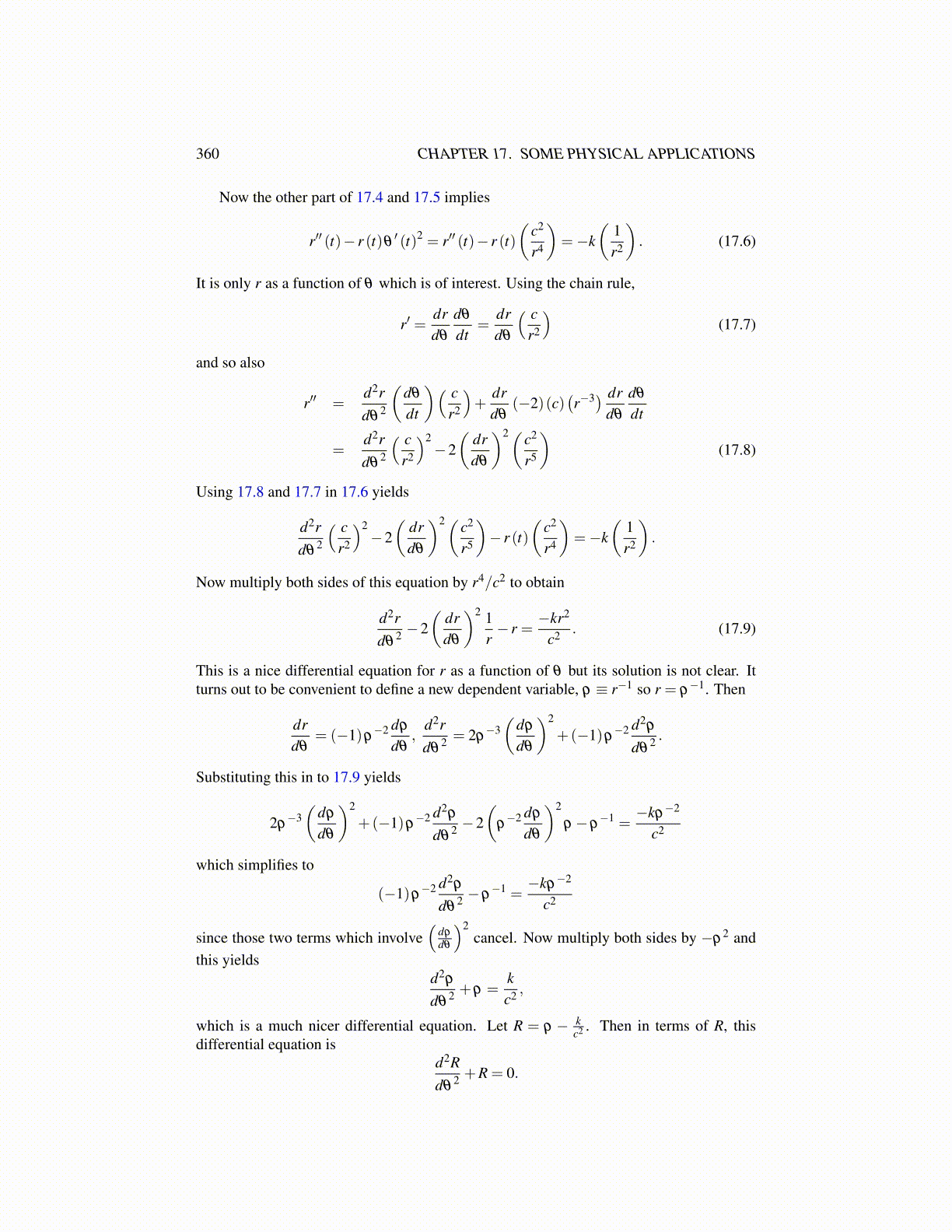
360 CHAPTER 17. SOME PHYSICAL APPLICATIONS
and this yields
x2/
(ε2 p2
1− ε2
)+
(y+
pε2
1− ε2
)2
/
(ε2 p2
(1− ε2)2
)= 1. (17.12)
Now note this is the equation of an ellipse and that the diameter of this ellipse is
2ε p(1− ε2)
≡ 2a. (17.13)
This follows becauseε2 p2
(1− ε2)2 ≥ ε2 p2
1− ε2 .
Now let T denote the time it takes for the planet to make one revolution about the sun. Itis left as an exercise for you to show that the area of an ellipse whose long axis is 2a andwhose short axis is 2b is πab. This is an exercise in trig. substitutions and is a little tediousbut routine. Using this formula, and 17.3 the following equation must hold.
area of ellipse︷ ︸︸ ︷π
ε p√1− ε2
ε p(1− ε2)
= Tc2
Therefore,
T =2c
πε2 p2
(1− ε2)3/2
and so
T 2 =4π2ε4 p4
c2 (1− ε2)3
Now using 17.10, recalling that k = GM, and 17.13,
T 2 =4π2ε4 p4
kε p(1− ε2)3 =4π2 (ε p)3
k (1− ε2)3 =4π2a3
k=
4π2a3
GM.
Written more memorably, this has shown
T 2 =4π2
GM
(diameter of ellipse
2
)3
. (17.14)
This relationship is known as Kepler’s third law.
17.4 The Angular Velocity VectorLet (i(t) ,j (t) ,k (t)) be a right handed system of unit basis vectors. Thus k (t) = i(t)×j (t) and each vector has unit length. This represents a moving coordinate system. Weassume that i(t) ,j (t) ,k (t) are each continuous having continuous derivatives, as many asneeded for the following manipulations for t in some open interval. The various rules ofdifferentiation of vector valued functions will be used to show the existence of an angularvelocity vector.